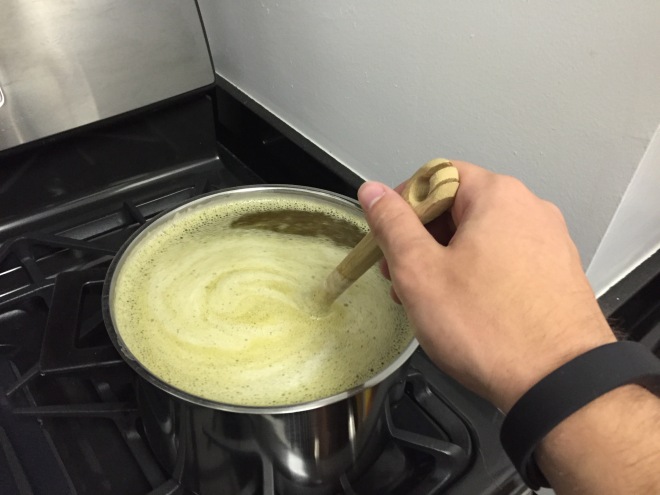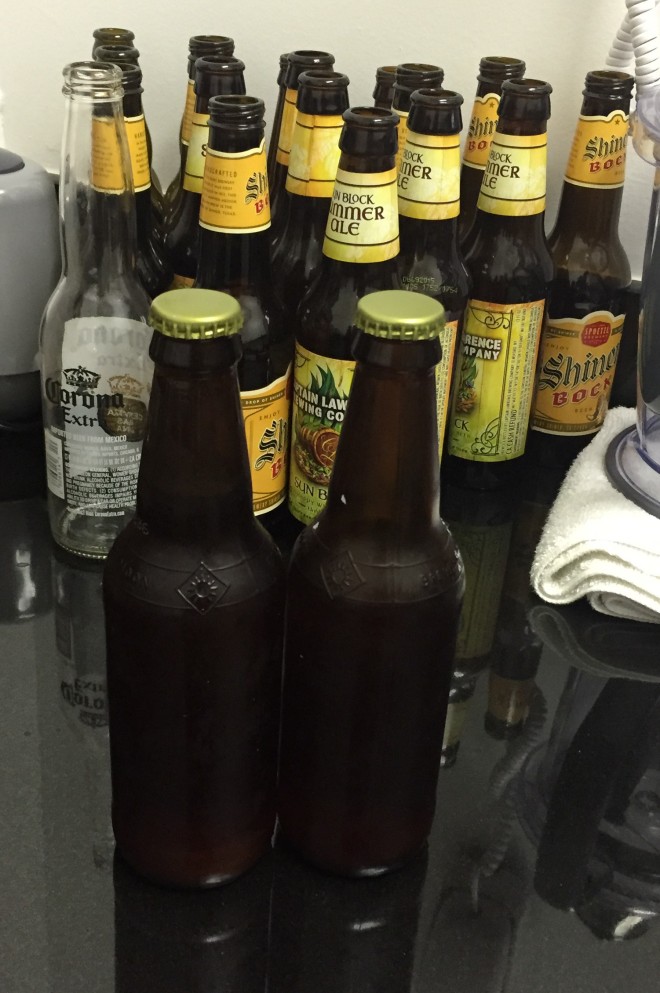 Who knew I could turn my name into so many food related puns? Anyway, continuing on the theme of summer eats, I figured it was about time to get into some summer drinks. There’s only one way that Bud Light (or any of those “light” American lagers) ever actually tastes good, and that’s sitting outside, basking in the sunlight and drinking one straight out of the can. I’ve said it before, but there is just something right about summertime and a cold can of cheap beer. Does this sound like a country song yet? What if I threw in a girl and a pickup truck?
Who knew I could turn my name into so many food related puns? Anyway, continuing on the theme of summer eats, I figured it was about time to get into some summer drinks. There’s only one way that Bud Light (or any of those “light” American lagers) ever actually tastes good, and that’s sitting outside, basking in the sunlight and drinking one straight out of the can. I’ve said it before, but there is just something right about summertime and a cold can of cheap beer. Does this sound like a country song yet? What if I threw in a girl and a pickup truck?
Ok, back on topic. Today is about beer. Specifically, home brewed beer because no one wants to hear me go on about the magic of cheap beer and sunshine.
 I’ve visited my fair share of professional breweries – from Sam Adams to Goose Island to Guinness – and the first thing you learn anywhere is that beer comes from 4 basic ingredients: water, malt(barley), hops and yeast. There are even laws about this! Fortunately, for the aspiring home brewer, this means making your own beer is surprisingly simple. The first step is to create your wort. This is really just a fancy beer brewers way of saying boiling water and pouring in your malt. Some brewers will chalk up the taste of their beer to the distinctive properties of the magical water that they use, and the water does impart a taste to be sure, but the malt is where you really start to define the type of beer you are going to make. The malt defines the color of your beer; dark beer or light beer is defined by the type of malt used to create the wort. Lighter roasts will lead to lighter beers, like the American lagers I mentioned before. Darker roasts will result in darker beers. Guinness for instance(my favorite beer in case anyone was curious), gets its distinctive ruby red (NOT black) color from the dark roast malt that is used in the brewing process. The brew in the picture above was destined to become an American Pale Ale so the malt used was a lighter roast.
I’ve visited my fair share of professional breweries – from Sam Adams to Goose Island to Guinness – and the first thing you learn anywhere is that beer comes from 4 basic ingredients: water, malt(barley), hops and yeast. There are even laws about this! Fortunately, for the aspiring home brewer, this means making your own beer is surprisingly simple. The first step is to create your wort. This is really just a fancy beer brewers way of saying boiling water and pouring in your malt. Some brewers will chalk up the taste of their beer to the distinctive properties of the magical water that they use, and the water does impart a taste to be sure, but the malt is where you really start to define the type of beer you are going to make. The malt defines the color of your beer; dark beer or light beer is defined by the type of malt used to create the wort. Lighter roasts will lead to lighter beers, like the American lagers I mentioned before. Darker roasts will result in darker beers. Guinness for instance(my favorite beer in case anyone was curious), gets its distinctive ruby red (NOT black) color from the dark roast malt that is used in the brewing process. The brew in the picture above was destined to become an American Pale Ale so the malt used was a lighter roast.
If you’ve ever seen a Samuel Adams commercial(or read what I just wrote up above), you can probably take a guess as to what is the next ingredient. I’m not sure that hops are used for anything other than brewing beer, so you’re forgiven for not knowing what they actually are. Being the nice guy that I am, I’ve included a picture for you:
 Hops are basically a tiny, green, soft and VERY pungent pine cone(that’s my description, you won’t find that in any horticulture books). They’ve got an odor and stickiness to them that is pretty hard to get off of your hands. That said, they smell great, and impart a lot of flavor onto beers they are used in. Any beer you drink will likely have some amount of hops involved in the brewing process, but when you think hops you tend to think IPAs due to the relatively large amounts of hops used in the brewing process. In these types of beers its easy to really smell that hop aroma coming through. When it comes to the home brew, since it was an American Pale Ale, it used a relatively high amount of hops.
Hops are basically a tiny, green, soft and VERY pungent pine cone(that’s my description, you won’t find that in any horticulture books). They’ve got an odor and stickiness to them that is pretty hard to get off of your hands. That said, they smell great, and impart a lot of flavor onto beers they are used in. Any beer you drink will likely have some amount of hops involved in the brewing process, but when you think hops you tend to think IPAs due to the relatively large amounts of hops used in the brewing process. In these types of beers its easy to really smell that hop aroma coming through. When it comes to the home brew, since it was an American Pale Ale, it used a relatively high amount of hops.
 Once the wort cooks for a bit (about an hour in this case), you’re ready to move to fermentation. The yeast is where you really differentiate the type of beer you have. The yeast is what produces the alcohol and carbon dioxide in beer. Some breweries pride themselves on having used the same strain of yeast for centuries. At the most basic level, you’ve got your top-fermenting yeasts that produce ales and your bottom-fermenting yeasts that produce lagers. This batch used a top fermenting yeast. Did I mention beer brewing was actually pretty simple? All you’ve got to do is pour your wort into a fermenting vessel (read: glass jug), add your yeast and seal up.
Once the wort cooks for a bit (about an hour in this case), you’re ready to move to fermentation. The yeast is where you really differentiate the type of beer you have. The yeast is what produces the alcohol and carbon dioxide in beer. Some breweries pride themselves on having used the same strain of yeast for centuries. At the most basic level, you’ve got your top-fermenting yeasts that produce ales and your bottom-fermenting yeasts that produce lagers. This batch used a top fermenting yeast. Did I mention beer brewing was actually pretty simple? All you’ve got to do is pour your wort into a fermenting vessel (read: glass jug), add your yeast and seal up.
I know I said there were only 4 ingredients in brewing beer, but when you’re brewing your own there’s a 5th one: time. This whole process took 4 weeks. Once the beer is set to ferment you just have to tuck it in a cool dark corner and make sure it doesn’t get too hot as the yeast begins the fermentation process.
 After about 2 weeks you’ll be ready to bottle. Once bottled, you’re going to want to wait about another 2 weeks before you crack open a cold one to enjoy. This batch yielded about 12 bottles. The bottles may be recycled and the batch small, but this brew could stand up against any of the mainstream brands. There’s nothing like sitting outside during the summer drinking a nice cold beer except sitting outside during summer drinking a nice cold beer that you brewed yourself.
After about 2 weeks you’ll be ready to bottle. Once bottled, you’re going to want to wait about another 2 weeks before you crack open a cold one to enjoy. This batch yielded about 12 bottles. The bottles may be recycled and the batch small, but this brew could stand up against any of the mainstream brands. There’s nothing like sitting outside during the summer drinking a nice cold beer except sitting outside during summer drinking a nice cold beer that you brewed yourself.
[…] of beef. But, why limit yourself to enjoying good steak only at steakhouses? In the theme of home brewing, if something is worth eating then it’s worth cooking up yourself. The best part is, […]
LikeLike